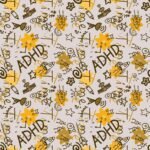Getting It All Wrong
This week’s NYT Magazine features a long bit of education arcana twirled by Paul Tough, the Canadian-American author who popularized “relentless perseverance” in his bestselling book, How Children Succeed: Grit, Curiosity, and the Hidden Power of Character. The aptly named Tough is not an educator or a scientist and is a college dropout, thereby diluting his authority as to the value of relentless perseverance. No insult intended. I don’t know Tough, and I do like Canadians.
The article is linked above if you have the time and grit to get through it. An executive summary might read: “Have We Been Thinking About A.D.H.D. All Wrong?” Well, er, yeah, duh.
I am far from the only voice yelling, “I told you so!” Tough’s long piece offers many samples of the contradictory or confusing studies that have experts reconsidering their expertise. The skepticism is long overdue and of little use to the millions of children who have been medicated into classroom compliance.
Some years ago I was invited to sit on a panel discussing the apparent dramatic rise in attentional problems in schools. After a few experts opined on the problem and the medications used in mitigation, I offered a contrarian take. “If, a student is identified with an attention problem, the problem almost invariably indicates something wrong with the school, not the child.” Some throat clearing among the experts followed.
I didn’t go so far as to say that A.D.H.D. doesn’t exist, but the temptation loomed large. I am neither naive nor poorly informed, but my skepticism has grown deeper over the years. Yes, researchers have identified some level of genetic predisposition and an imbalance of neurotransmitters, but none among these suspected causal factors are universal or provable. The so-called evidence is by association or weak correlation. I think the whole field rises barely above pseudo-science. But boy-oh-boy is it profitable!
My own pseudo-scientific contribution is to suggest that A.D.H.D. is merely a large smudge on the continuum of marvelous neurodiversity among humans. It is critical to recognize that the qualities exhibited by those who inhabit this large smudge can be qualities of great value as well as disadvantage. I suggest that the qualities associated with A.D.H.D. are useful in natural contexts and these same qualities are disadvantages in unnatural contexts like silent, still classrooms.
Although a digression, I can’t resist recommending Frank Smith’s marvelous book, Unspeakable Acts, Unnatural Practices, which addresses this same distinction in the realm of reading instruction. He regards the “science of reading” as flawed just as I suggest the “science of inattention” is flawed. Our treatment of young people who are “diagnosed” with ADHD is unspeakable and unnatural just as a developmentally-blind-phonics-first-drilling approach to reading is unspeakable and unnatural. In both instances the assessments, policies and practices are informed by an assumption that all children learn and develop in the same way and at the same rate. That is a false, ignorant and harmful assumption.
The typical classroom in our country expects silence, compliance and focus on things that are of little or no interest to actual children, particularly boys. (Girls, many of whom are engineered or socialized more toward cooperation and compliance, do somewhat better.) Then, when they fidget, daydream or disrupt a bit, they are admonished, stigmatized, assessed, diagnosed and too often medicated.
There are many progressive schools where girls and boys can play, learn and live democratically together. Such schools don’t penalize girls or boys for inhabiting a particular smudge on the neurodiversity spectrum or medicate them into compliance and conformity.
Just a week before wading through Tough’s essay, I learned about a new book by Ida Rose Florez, Ph.D. titled, The End of Education As We Know It. (If only!) The book’s forward is by Peter Gray, Ph.D. and offers a tantalizing introduction.
Florez-by-way-of-Gray offers a critically important distinction between “complicated” and “complex” systems. This distinction is yet another way to frame the differences between progressive and traditional approaches to learning.
All these things tie together in a way that would merit a book, if I had another book in me.
The elements of traditional education are complicated: data, curricula, phonics, grade structures, assessments, scores, analyses.
The human organism is complex; overlapping layers of biology, neurology, natural growth, idiosyncrasy, beauty, wonder, curiosity, imagination.
Complicated systems don’t work well for complex humans.
While an oversimplification, Frank Smith’s accusation of Unspeakable Acts and Unnatural Practices is aimed at the same mismatch between complicated, mechanized, approaches to reading when a complex human system is being engaged.
And circling back, the magazine title, “Have We Been Thinking About A.D.H.D. All Wrong?”, is another iteration of the same theme. We (they) have been thinking about A.D.H.D. as a complicated piece of human existence when it is really a complex matter.
I am not a science denier, of course, but when complex systems are subjected to complicated, mechanized examination, there is great risk of getting it all wrong.
And getting it wrong is what we’ve been doing.
Steve Nelson is a retired head of a leading progressive school, a grandfather, author and newspaper columnist living in Colorado and Vermont. His book is First Do No Harm: Progressive Education in a Time of Existential Risk. This article was originally posted on his blog, First, Do No Harm, and is posted here with permission from Steve Nelson.
Like most of the pictures on TeensParentsTeachers, the picture posted with this article is courtesy of a free download from Pixabay.com.

